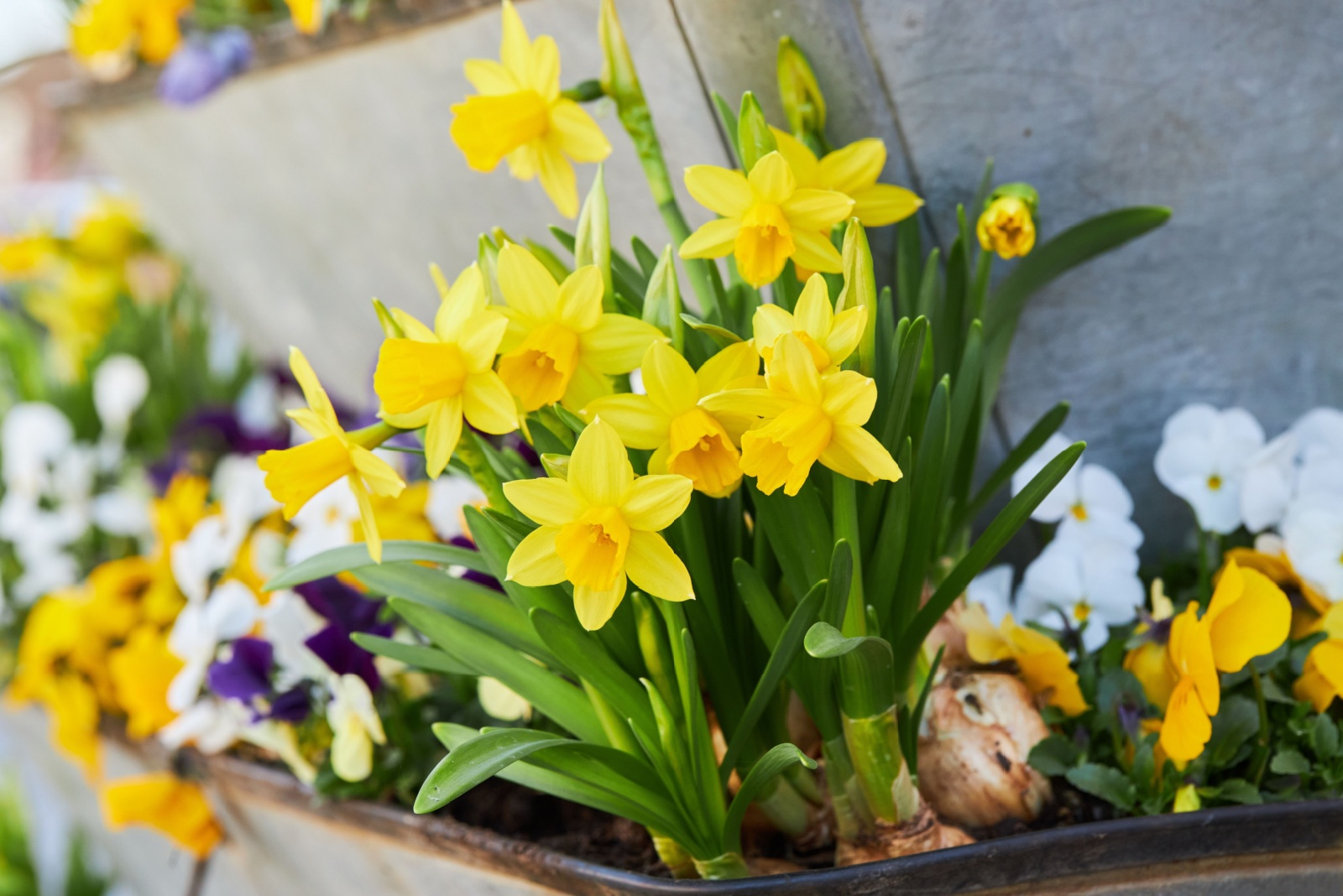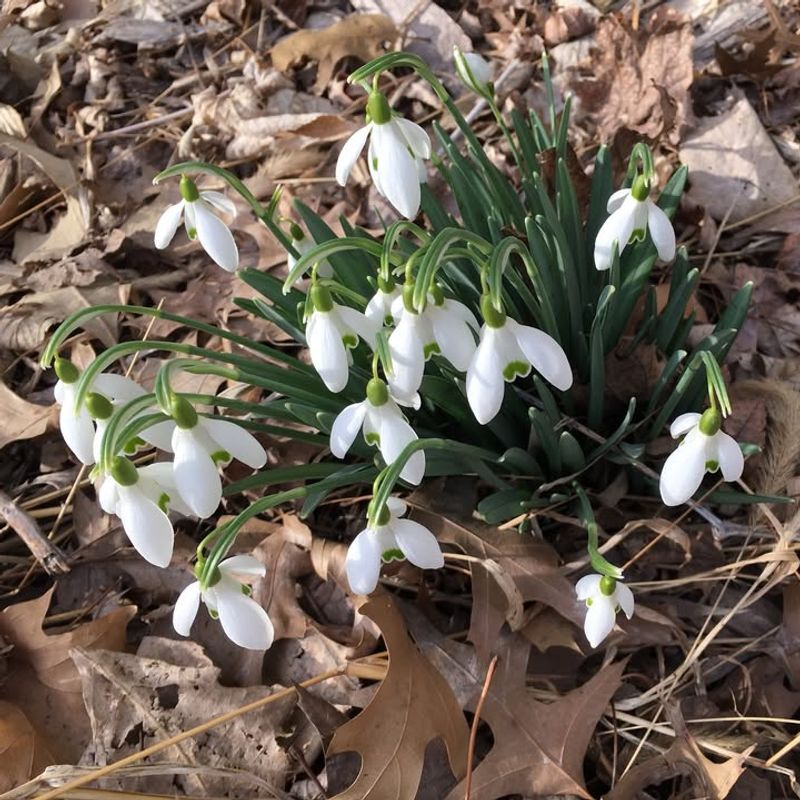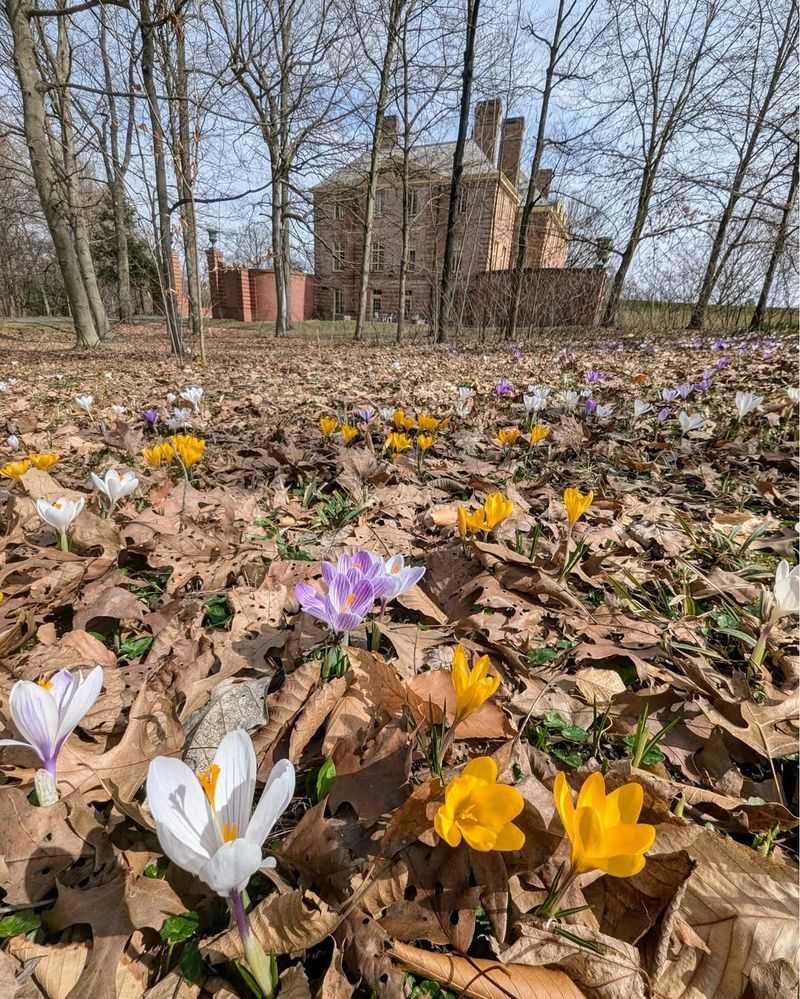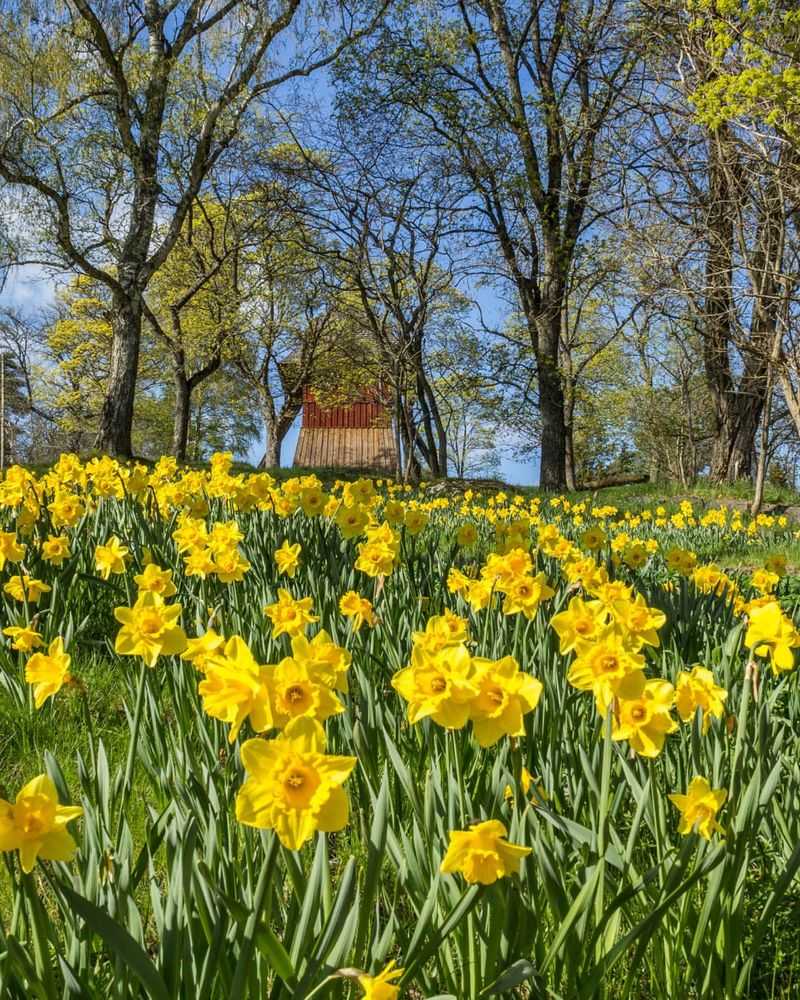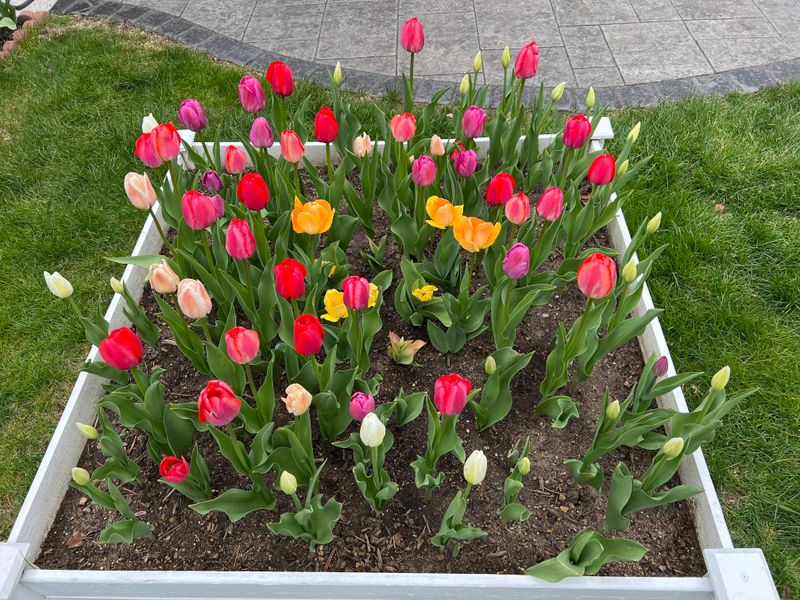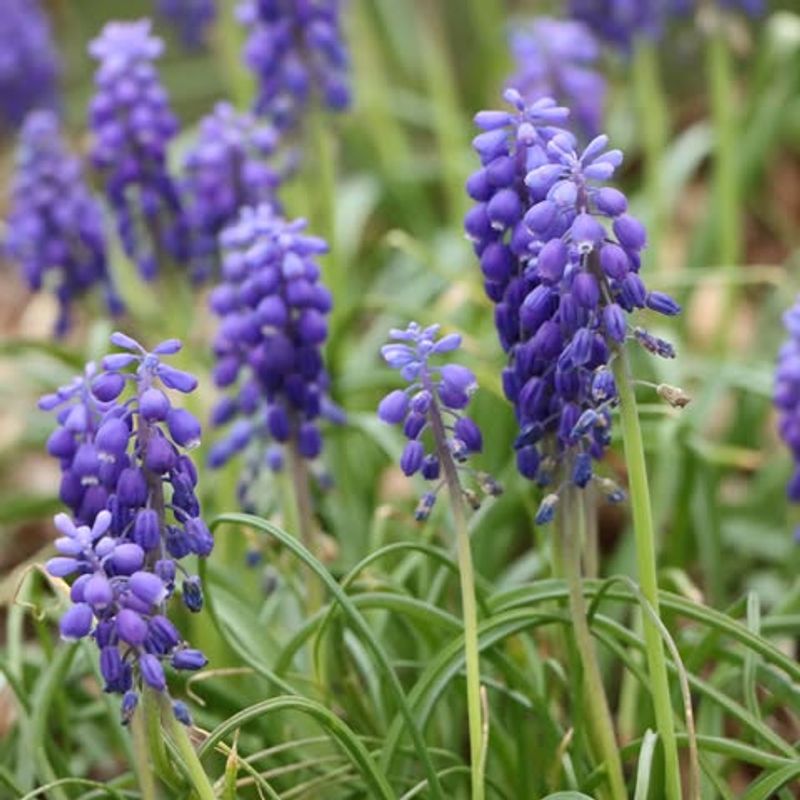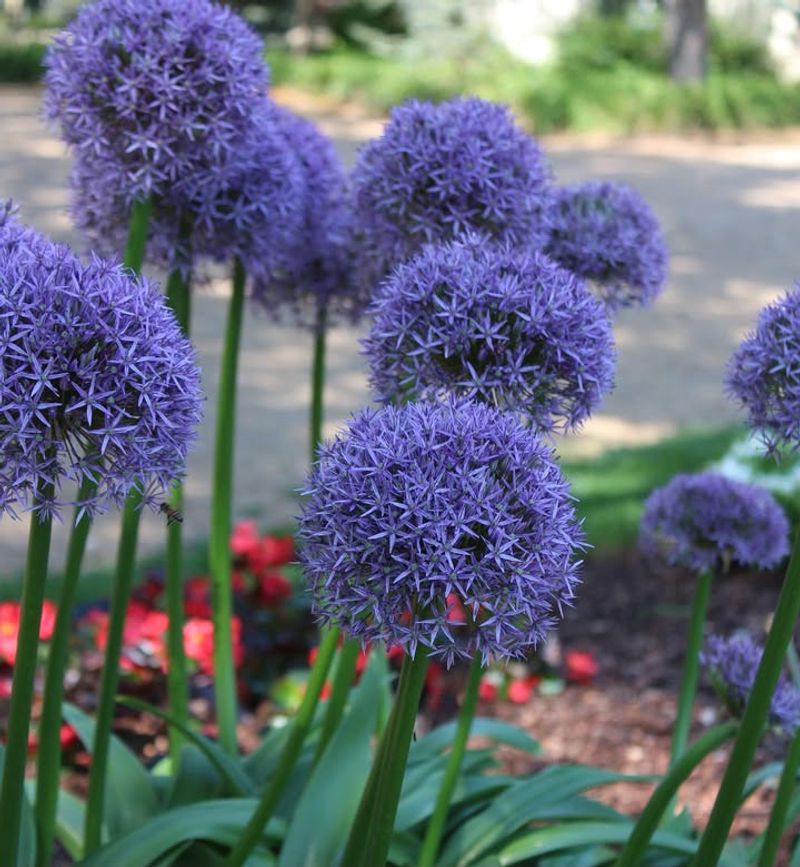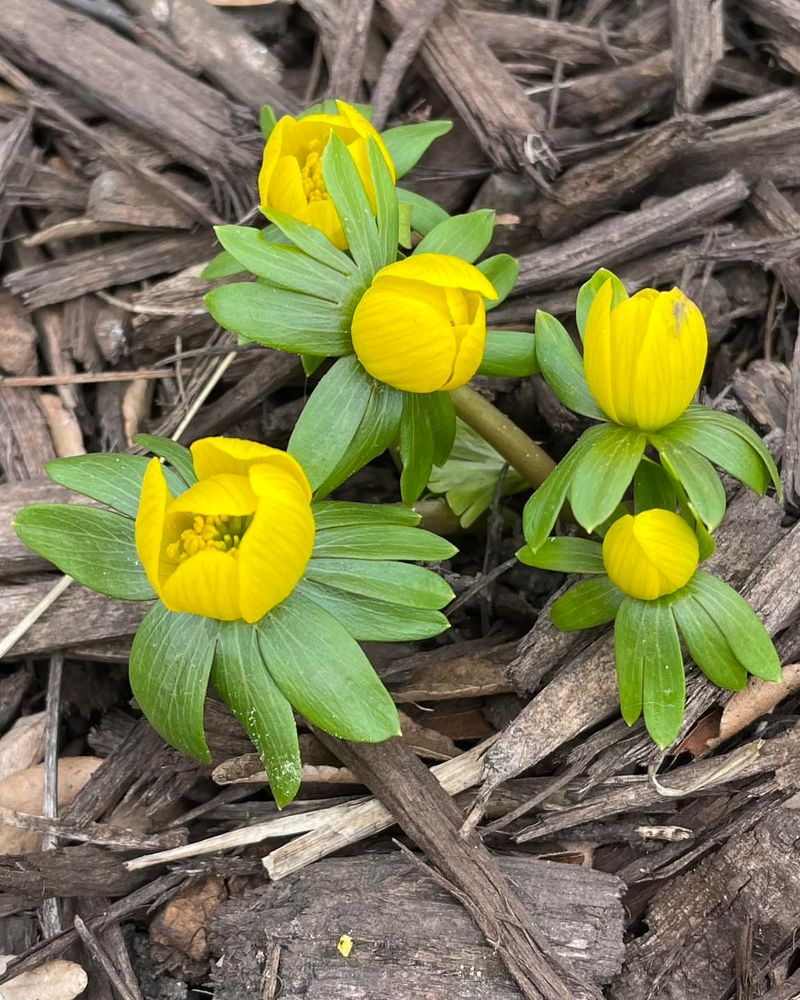Michigan winters can be harsh, but that doesn’t mean your garden has to look dull. With the right fall bulbs, you’re planting a promise of spring color.
Many bulbs actually need that cold stretch to grow strong and bloom beautifully. It’s nature’s way of prepping them for a vibrant comeback after months of snow and gray skies.
I’ve seen tulips, daffodils, and crocuses burst through frozen ground like little celebrations. A bit of planning now means your yard will wake up in style when winter fades.
1. Snowdrops
Among the earliest bloomers in Michigan, snowdrops push through frozen ground to announce spring’s arrival. Their delicate white petals dangle like tiny bells, creating magical carpets beneath still-bare trees.
Plant these hardy bulbs about three inches deep in fall, choosing spots with partial shade. They multiply naturally over time, spreading into larger colonies that become more impressive each year.
Squirrels rarely bother them, making snowdrops a worry-free choice for Michigan gardeners who struggle with bulb-stealing critters.
2. Crocuses
Crocuses bring a cheerful explosion of purple, yellow, and white to gardens just when you need it most. These tough little flowers laugh at Michigan’s unpredictable late-winter weather, popping up even during occasional warm spells in February or March.
Plant them in clusters rather than straight lines for a natural, meadow-like appearance that catches everyone’s eye. They prefer sunny locations and well-drained soil.
Bonus: early bees absolutely adore crocus blooms, making them important for pollinators emerging from winter dormancy.
3. Daffodils
Nothing says spring quite like cheerful daffodils nodding in the breeze. Michigan’s climate suits these reliable bloomers perfectly, as they handle cold winters without complaint and return faithfully year after year.
Their trumpet-shaped flowers come in shades from pale cream to deep golden yellow. Plant bulbs about six inches deep in fall, spacing them several inches apart for best results.
Deer and rodents avoid daffodils completely, which makes them perfect for Michigan properties where wildlife frequently visits gardens.
4. Tulips
Tulips transform Michigan gardens into rainbow-colored showcases each spring. From classic reds to striped varieties and frilly doubles, there’s a tulip style for every gardener’s taste and personality.
Plant bulbs pointed-end-up about eight inches deep in October or November before the ground freezes solid. Choose a sunny spot with good drainage to prevent bulbs from rotting.
While some varieties bloom for just one spectacular season, others return for several years with proper care and occasional fertilizing.
5. Hyacinths
Walk past blooming hyacinths and their sweet perfume stops you in your tracks. Michigan gardeners treasure these fragrant flowers for their intense scent that fills entire yards with springtime sweetness.
Their thick flower spikes come packed with tiny blooms in pink, purple, white, or blue shades. Plant bulbs about six inches deep in well-drained soil during fall months.
Hyacinths work beautifully near doorways or along walkways where everyone can appreciate their amazing fragrance as they pass by each day.
6. Grape Hyacinths
Despite their name, grape hyacinths aren’t actually related to regular hyacinths at all. These miniature charmers produce clusters of tiny, grape-like blooms in the most beautiful shade of cobalt blue imaginable.
They naturalize easily in Michigan gardens, spreading to create stunning blue rivers under trees or along garden edges. Plant them two to three inches deep in fall.
Extremely low-maintenance, grape hyacinths return reliably each spring and rarely need dividing or special attention from busy gardeners.
7. Alliums
Alliums create dramatic focal points with their perfectly round flower heads perched atop tall, sturdy stems. Related to onions and garlic, these architectural beauties add vertical interest and modern style to traditional Michigan gardens.
Their purple, pink, or white globe-shaped blooms can measure from golf-ball to softball size depending on variety. Plant larger allium bulbs about eight inches deep in fall.
Pollinators flock to allium flowers, while deer and rabbits stay far away because of their onion-family scent and taste.
8. Siberian Squill
Siberian squill creates breathtaking blue carpets under trees and shrubs throughout Michigan neighborhoods each spring. Originally from Russia, these tough customers handle Michigan’s harsh winters better than many native plants ever could.
Their electric-blue, star-shaped flowers appear very early, often alongside snowdrops and crocuses. Plant bulbs three inches deep in fall wherever you want color.
Once established, Siberian squill self-seeds enthusiastically, gradually expanding into larger drifts that become more impressive with each passing year and season.
9. Winter Aconite
Winter aconite earns its name by blooming incredibly early, sometimes pushing through snow in late February. Bright yellow, buttercup-like flowers sit atop a ruff of green leaves that resembles a fancy collar.
Plant these small tubers about three inches deep in fall, soaking them overnight before planting to improve success rates. They prefer partial shade and moist soil.
Like many early bloomers, winter aconite naturalizes readily in Michigan gardens, creating golden pools of sunshine when everything else still looks dormant and gray.
10. Glory-Of-The-Snow
Glory-of-the-snow lives up to its poetic name by blooming right as winter releases its grip on Michigan. Delicate star-shaped flowers in shades of blue, pink, or white seem almost too dainty to survive cold weather, yet they’re surprisingly tough.
Plant bulbs about three inches deep in fall, choosing locations with full sun to partial shade. They look especially lovely planted in large drifts rather than small groups.
Once settled in, glory-of-the-snow spreads gradually, creating increasingly beautiful displays that brighten gardens for decades.
11. Striped Squill
Striped squill offers something different with its pale blue petals decorated by darker blue racing stripes down each petal’s center. Sometimes called striped sea squill, these delicate flowers bring subtle beauty rather than bold, attention-grabbing color to Michigan landscapes.
Plant bulbs three inches deep in fall in areas with good drainage and partial shade. They work wonderfully in rock gardens or naturalized in lawn areas.
Striped squill multiplies steadily over time, forming lovely colonies that need virtually no maintenance once they’re happily established in your garden.
12. Camassia
Camassia brings a native wildflower look to Michigan gardens with tall spikes of star-shaped blue or white flowers. Native Americans once harvested camassia bulbs as food, though modern gardeners grow them purely for their striking late-spring beauty.
Plant bulbs about four inches deep in fall, choosing locations that stay somewhat moist during spring growing season. They tolerate Michigan’s clay soils better than many bulbs.
Camassia flowers attract butterflies and other beneficial insects while naturalizing beautifully in meadow-style gardens or alongside ponds and water features.

